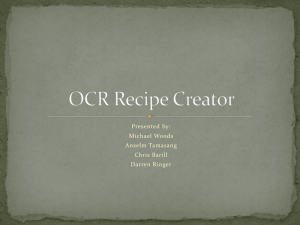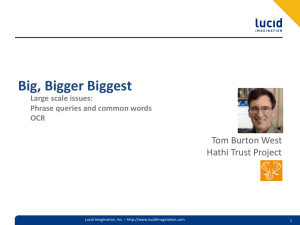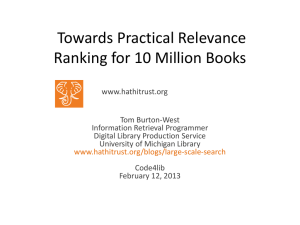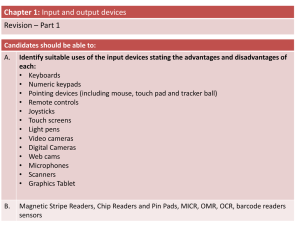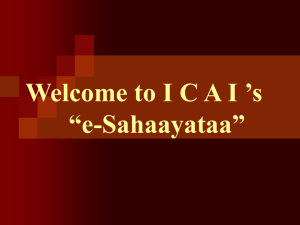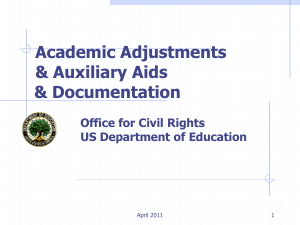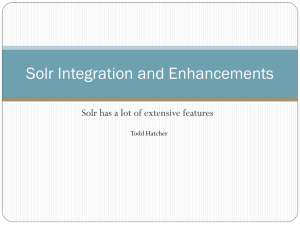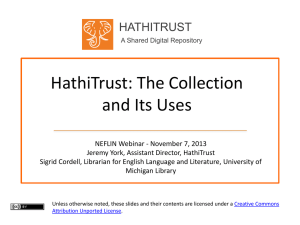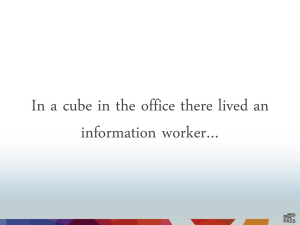HathiTrust Large Scale Search: Scalability meets Usability
advertisement
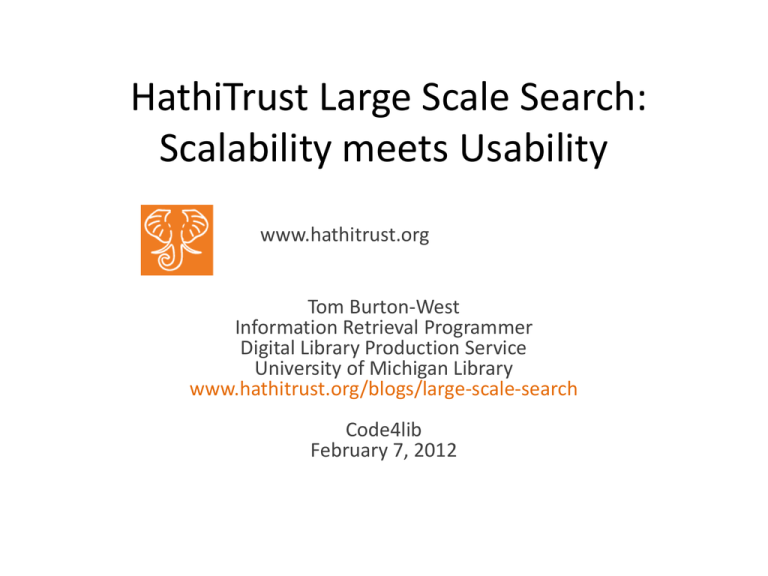
HathiTrust Large Scale Search:
Scalability meets Usability
wwww.hathitrust.orgww.hathit
rust.org
Tom Burton-West
Information Retrieval Programmer
Digital Library Production Service
University of Michigan Library
www.hathitrust.org/blogs/large-scale-search
Code4lib
February 7, 2012
HathiTrust
• HathiTrust is a shared digital repository
• 50+ member libraries
• Large Scale Search is one of many services built on
top of the repository
• Currently about 10 million books
• 450 Terabytes
– Preservation page images;jpeg 2000, tiff (438TB)
– OCR and Metadata about (12TB)
2
Large Scale Search Challenges
• Goal: Design a system for full-text search that
will scale to 10 million -20 million volumes (at
a reasonable cost.)
• Challenges:
– Must scale to 20 million full-text volumes
– Very long documents compared to most large-scale search
applications
– Multilingual collection (400+ languages)
– OCR quality varies
Long Documents
–
•
•
Average Document Size
Average HathiTrust document is 700KB
containing over 100,000 words.
Estimated size of 10 million Document
collection is 7 TB.
Average HathiTrust document is about 38
times larger than the average document
size of 18KB used in Large Research test
collections
2 quadrillion words in corpus
Avg Doc Size in KB
•
800
600
400
200
0
HathiTrust
TREC GOV2
SPIRIT
Collection
Size
Documents
Average Doc
size
HathiTrust
7 TB
10 million
700 KB
TREC GOV2
0.456 TB
25 million
18 KB
SPIRIT
1 TB
94 million
10 KB
NW1000G-04
1.3 TB*
100 million
16 KB
NW1000G-04
Multilingual
• 400+ languages, 50 languages with over 1,000
volumes.
• About 500,000 (5% )of volumes in multiple languages
• Currently all languages in one index
• Lowest common denominator tokenizing
• Some languages are challenging for Information
Retrieval
– CJK
– Arabic
– Finnish, Turkish, German
Language Distribution (1)
Arabic Latin
2%Italian 1%
Japanese 3%
Remaining
Languages
14%
3%
Russian
4%
Chinese
4%
Spanish
5%
French
7%
The top 10 languages make up
~86% of all content
English
48%
German
9%
* As of January 4, 2012
Language Distribution (2)
Ancient-Greek
Ukrainian Bulgarian
Panjabi Catalan
The next 40
Multiple
1%
1%
1%
1%
1% Malayalam
Romanian
1%
Armenian
languages make
Telugu
1%
1%
Malay
Undetermined
1% Marathi 1%
Vietnamese Greek
up ~13% of total
1%
7%
1%
Finnish
1%
Slovak
1%
(percentages shown are
Serbian
Polish
1%
1%
Sanskrit
Hungarian
percentage of the 13%)
1%
7%
Portuguese
2%
2%
7%
Norwegian
2%
Dutch
Music
5%
2% Bengali
2%
Tamil
Persian
2%
2%
Croatian
2%
Unknown
3%
Czech
3%
Danish
3%
Hebrew
5%
Hindi
5%
Thai
3%
Turkish Urdu
3%
3%
Korean
Swedish 4%
3%
Indonesian
4%
* As of January 4, 2012
“Dirty” OCR
• The OCR varies in quality
• Dirty OCR results in large
terms index, and high
memory consumption
• Dirty OCR affects term
statistics and makes
some volumes difficult
to find
• Example: Hebrew
characters not
recognized
OCR from discolored text
Scalability meets Usability : Challenges
• Must have reasonable
response time as collection
scales to 20 million volumes
• Provide good results on the
first result page (relevance
ranking)
• Provide good results for
non-English searching
• Help users manage large
result sets or drill down
within them
• All the usability issues for
search interfaces apply
regardless of scale
Response time and scalability
• Ideally response time should be under 1
second*
• Response time of over 10 seconds distracts
users from their tasks*
• Early scalability tests with 1 million volumes
showed the slowest 1% of queries took from
10 seconds to two minutes
*See:
http://www.useit.com/papers/responsetime.html
Response Time Varies with Query
Average: 673
Median: 91
90th:
328
99th:
7,504
Slowest 5% of queries
Response Time
(seconds)
Response Time 95th percentile (seconds)
1,000
100
Slowest 1%
10
1
0
940
950
960
970
980
Query number
990
1,000
Performance problem: phrase queries
too slow
• Slowest query: “The lives and literature of the
beat generation” took 2 minutes
• Cause of slow queries is high disk I/O
• Phrase queries require reading the “positions
index” from disk
• Common words such as “the” occur so
frequently that reading their positions list
requires many GB of disk I/O
Stop Words
• The word “the” occurs 40 billion times in the
corpus or about 4 billion times per million
documents.
• Removing “stop” words (“the”, “of” etc.) not
desirable
• Couldn’t search for many phrases
– “to be or not to be”
– “the who”
– “man in the moon” vs. “man on the moon”
Stop Words
• Stop words in one language are content words
in another language
• German stopwords “war” and “die” are
content words in English
• English stopwords “is” and “by” are content
words (“ice” and “village”) in Swedish
CommonGrams
• Instead of stop words, create bi-grams for
common words
• Example: Slowest query: “The lives and
literature of the beat generation”
• “the-lives” “lives-and”
• “and-literature” “literature-of”
• “of-the” “the-beat” “generation”
Standard index vs. CommonGrams
(500,000 document index)
• Common Grams
• Standard Index
TOTAL
OCCURRENCES
IN CORPUS
(MILLIONS)
TOTAL
OCCURRENCES
IN CORPUS
(MILLIONS)
NUMBER OF
DOCS
(THOUSANDS)
the
2,013
386
of-the
446
396
of
1,299
440
generation
2.42
262
855
376
the-lives
0.36
128
literature
4
210
literature-of
0.35
103
lives
2
194
lives-and
0.25
115
generation
2
199
and-literature
0.24
77
0.6
4,176
130
the-beat
0.06
26
TOTAL
450
WORD
and
beat
TOTAL
TERM
NUMBER OF
DOCS
(THOUSANDS)
CommonGrams
Comparison of Response time (ms)
average
median
90th
99th
slowest
query
Standard Index
459
32
146
6,784
120,595
Common Grams
68
3
71
2,226
7,800
http://www.hathitrust.org/blogs/large-scale-search/slowqueries-and-common-words-part-2
http://www.hathitrust.org/blogs/large-scale-search/slowqueries-and-common-words-part-1
Good Response Time with Large Indexes:
Tuning Caching and Memory
•
Our 10 million document index is about 7 terabytes.
–
About 700 GB per million documents
•
•
Large index means disk I/O is bottleneck
Tradeoff JVM vs OS memory
– Solr uses OS memory (disk I/O caching) for caching of postings
– Tests showed memory available for disk I/O caching has most
impact on response time (assuming adequate cache warming)
• Performance tuning
– Reduce memory needed by Solr ( 16GB for 3 shards)
• termInfosIndexDivisor and termIndexInterval
– Leave a large amount of free OS memory for caching (about 50GB per server)
– Run cache-warming queries every morning
21
Full-text search and “search within a
book”: Tuning for response time
• Full-text search of 10 million books uses the whole book as a Solr
document.
– Size about 7 TB, so we need to optimize the index for minimal query latency.
– We index off-line
– We optimize off-line before putting the index into production for searching
• “search within a book” indexes a book on-the fly and indexes each page of
a book as a Solr document.
– Each page has a “book id” field so a search within the book includes a filter
query: q1=bacon&fq= book_id=12345
– It is optimized for minimal latency between the time the book is sent for
indexing and the time the book is available for searching
– We keep the index small by deleting it nightly. Average size is about 4GB
– We index and serve queries in the same Solr instance
– We configure the index to minimize merging
– We store the pages so that we can display and highlight snippets
Good Results and Relevance
• System magic
– query processing
• Field weighting 1 (add boosts for matches in
author/title/subject metadata)
• Query normalization (lower casing, diacritic normalization)
• Query expansion (synonyms, stemming, added phrase
queries)
• Field weighting 2 , weighted query expansion/normalization
• query intent guessing
• Help users refine their search
– user query reformulation (UX issues)
– Advanced search including MARC metadata
– faceting
Relevance: Recall and Precision
• Recall = how many of the relevant results in
the collection are returned
• Precision = the ratio of relevant results to the
total number of results.
• Normally for relevance ranking these are
measured at some number of results for
example p@10 is the precision at 10 results
Precision, Recall and Performance
• Generally there is an inverse relationship
between precision and recall
• Different types of queries favor recall or
precision
• Compare these queries:
– dog OR food (4,431,164) hits
– dog AND food (2,006,995) hits
– “dog food” (52,784 ) hits
For large-scale search, favor precision
over recall
• With the full text of over 10 million very long
documents large result sets can be a problem
– We changed the default Solr Boolean operator
from “OR” to “AND”
– We allow phrase queries so users can enter very
precise queries
– We don’t use stop words
– We don’t do stemming or use synonyms*
Weighted query expansion to boost recall
without hurting precision. (Scalable?)
• User query: [ dog food]
– Boost query: (“dog food”)^100 OR (“dog
food”~200) ^50 OR(dog AND food)^10 OR ( dog
OR food) ^1
– Dismax query: _query_:"{!edismax
qf='ocr^500+marcfields^10+
pf =ocr^5000+marcfields^40+
pf2=ocr^2500+marcfields^20
Usability v. Scalability:
Relevance v.s. performance
• Stopwords
– (solved with CommonGrams and cache warming)
• Adding weighted phrases (dismax pf,pf2,pf3 )
– (High disk I/O for OCR phrase searches)
• Proximity (words on same page/within 200
words)
– (High disk I/O for OCR phrase searches)
Usability v. Scalability:
Relevance v.s. performance complicated by multiple languages
• truncation operator
– 3+ billion unique words make truncation
computationally intractable
• Fuzzy search (helps with dirty OCR)
– 3+ billion unique words=intractable
• Character ngrams (language independent
stemming/helps with dirty OCR)
– Index size increase of 5-20x not scalable
Stemming and synonyms
• Stemming conflates different forms of the
same word to increase recall.
– cat, cats
– organized, organizer, organizing, organization
• However over-stemming leads to loss of
precision by conflating words with different
meanings
– Organize, Organic, Organ =>Organ
Stemming and synonyms
• Solution: create separate field and combine
unstemmed and stemmed field with lower weight for
stemmed field
• <copyField source=“unstemmed” dest=“stemmed”>
• Boost: q=unstemmed^1000+stemmed^50
• Problems
– Stemming is language-specific
– Copying the OCR field would double the index size from
6TB to 12TB
• Current hack
– Use copyfield stategy with English stemmer for MARC
fields only.
• Synonyms have similar issues
Normalization, diacritics and thé
• We normalize both text and queries. Words are
lower-cased and diacritics are removed
• Removing diacritics allows searching for nonEnglish words without special keyboard mappings
• The French word for tea is thé
– This gets normalized to “the” resulting in millions of
hits.
– The term statistics (idf) and relevance ranking are also
affected as thé would normally occur much less
frequently than “the”
– Copyfield solution would double size of index
Normalization, diacritics and thé
• Copyfield solution would double size of index
– <copyField source=“diacritics” dest=“noDiacritics”>
– Boost: q=diacritics^1000+noDiacritics^50
• Possible alternative: create filter that outputs
token both with and without diacritics as if they
were synonyms (only when there is a diacritic in
input)
• Search for thé would only match docs containing thé
• Search for the would match both the and thé
• Index size increase proportional to number of tokens with
diacritics
Tokenization and other languagespecific issues
• With over 400 languages, using language
detection and putting each language in a
separate field is not feasible
– What to do with 500,000 volumes in multiple
languages?
• We put all languages in one field
• Need to use analyzer that works ok for all
languages: ICUFilters
Tokenization and other languagespecific issues
• Some languages such as Chinese, Japanese, Thai, and
Vietnamese don’t use spaces to separate words*
– Language-specific solutions (SmartChineseAnalyzer)
– Script based solutions (CJK tokenizer, ICUTokenizer)
• For Chinese there are two character sets: Traditional
and Simplified. Users expect to enter terms in one
character set and get results in both.
• Japanese uses 4 different scripts, the same word may
be written in numerous ways
* http://www.hathitrust.org/blogs/large-scale-search/multilingual-issuespart-1-word-segmentation
Tokenization and other languagespecific issues
• Arabic has very large number of word forms
and needs stemming for effective retrieval.
– Solr has a very good light stemmer for Arabic
– Problem is that other languages such as Urdu use
the Arabic script
• Other languages (German for example )need
decompounding
• We can implement script-specific processing
but not yet language specific processing
New Features
• Help users with large result sets
– Facets based on MARC metadata
– Advanced search based on MARC metadata
• Improve relevance ranking
– Use added weight for matches in MARC metadata
– “Search within a book” back-end moved to Solr:
Relevance ranked results when searching within a
book
Facets based on MARC Metadata
1.6 million hits for Bacon!
•
•
•
Bacon the food?
Francis Bacon?
Roger Bacon?
Facets: Scalability and Usability
• Facets work best with small value sets of 1030 values. LCSH provides millions of values!
• Solr will show the top N facet values by facet
count
• The facet counts are based on all the results
• In HT full-text search large result sets (over
10,000 records) are common, the facet counts
are based on the entire result set, not the
most relevant of those 10,000+ records
Irrelevant Facets
Jaguar car, Jaguar animal, Jaguar OS?
Relevant facets
http://lucene.472066.n3.nabble.com/Getting-facet-counts-for-10-000most-relevant-hits-td3363459.html
Advanced search based on MARC
metadata and OCR
Advanced search based on MARC
metadata and OCR
Relevance ranking with MARC
Metadata
• Example (simplified)
q= _query_:"{!edismax
qf='ocr^5000
+AnyMARCField^2
+TitleField^50
+AuthorField^80
+SubjectField^50
+mm='100%'
tie='0.9' } bacon“
• mm = minimum must match
• tie = weight of all fields other than the field with maximum score
* see: http://wiki.apache.org/solr/DisMaxQParserPlugin
Relevance ranking with MARC
Metadata
• Example (actually used)
– q= _query_:"{!edismax
qf='ocr^50000+allfieldsProper^2+allfields^1+titleProper^50+title_topProper^
30+title_restProper^15+title^10+title_top^5+title_rest^2+series^5+series2^5
+author^80+author2^50+issn^1+isbn^1+oclc^1+sdrnum^1+ctrlnum^1+id^1+r
ptnum^1+topicProper^2+topic^1+hlb3^1+fullgeographic^1+fullgenre^1+era^
1+'
– pf='title_ab^10000+titleProper^1500+title_topProper^1000+title_restProper^
800+series^100+series2^100+author^1600+author2^800+topicProper^200+f
ullgenre^200+hlb3^200+allfieldsProper^100+' mm='100%25'
– tie='0.9' } bacon"
•
•
•
•
•
qf = query
pf = query words as a phrase query
pf2 and pf3 = disjunction of 2 and 3 word combinations as phrases
mm = minimum must match
tie = weight of all fields other than the field with maximum score
Tuning Relevance Ranking
• How should we adjust the relative weight
between OCR (full-text) and MARC fields?
• What are the Solr settings affecting ranking?
• How do you tell when one group of settings
provides more relevant results than another
– Need to test against some set of queries to insure
that improving results for one query doesn’t make
results for other queries worse
Solr relevance knobs
•
•
•
•
Query expansion
Field weighting
Boost queries or dismax queries
Expert
– length normalization
• SweetSpotSimilarity
– Solr relevance formula tf *idf
• write custom Similarity class or use Solr 4.0/Trunk
Testing Relevance
• Use test collection and relevance judgements
–
–
–
–
TREC/XML book track*
Are queries similar to your user’s queries?
Is collection similar to your collection?
What is the appropriate metric (P@10) other realworld issues?
• Relevance is complicated and different users will
consider different sets of documents relevant
– Ambiguous queries
*https://inex.mmci.uni-saarland.de/tracks/books/
Testing Relevance
• Use clickthrough logs and A/B testing*
– clickthrough not always measure of relevance
– A/B testing controversial in library settings
– Use interleaving to overcome order effects
• Usability testing?
• Beta testers ?
*Radlinski, F., Kurup, M., & Joachims, T. (2008). How does
clickthrough data reflect retrieval quality? In Proceeding of
the 17th ACM conference on Information and knowledge
management, CIKM '08 (pp. 43–52). New York, NY, USA: ACM.
doi:10.1145/1458082.1458092
“Dirty” OCR: Causes
• noise, varible ink,
bleedthrough, markings by
users
• tight bindings affect scanning,
words near binding or edge
can be distorted
• background color, fading,
water or mold damage/stains
• bad scanning, blurred,
operator scanning
• 400+ languages (x volumes in
more than one language)
* Feng and Manmatha (2010?)
“Dirty” OCR: Effects on OCR
• OCR engine produces no OCR for page or
volume
• OCR engine misrecognizes language/script and
produces garbage
• OCR engine interprets images as text and
produces garbage
“Dirty” OCR: Effects on Search
• Large number of garbage terms result in over
3 billion unique terms per index.
– blew up lucene *
– increased memory requirement to 32GB until we changed
termIndexInterval
– MultiTerm queries (wildcard, prefix/truncation)
performance unusable
– Problem for spelling suggestion
– Documents with lots of garbage from images have
incorrect document length normalization
* http://www.hathitrust.org/blogs/large-scale-search/toomany-words-again
“Dirty” OCR: Effects on Search
• Missing OCR text not retrievable, some
volumes not searchable
• Incorrectly recognized text not retrievable
• Term statistics and relevance ranking skewed
• If students underline important parts and
underlines cause misrecognition, important
parts less retrievable
“Dirty” OCR:Solutions?
• IR techniques for retrieving dirty OCR such as ngrams,
fuzzy matching, error correction and query garbling
have disappointing performance or are not scalable
(TREC 4&5 and Savoy 20xx)
• Removing hapax (terms that occur only once) will likely
remove huge amount of real words including proper
names
• Correction algorithms are designed for single language
• heuristics will remove some fraction of bad words but
must work with 400 languages
• Google improves OCR engine and re-OCR’s in a 2 year
cycle
Collection Builder
Collection Builder
Collection Builder
Collection Builder
• http://babel.hathitrust.org/cgi/mb
• Need to update one field, i.e. add user’s collection number to the
collection field
• Solr needs to re-index whole record including 800MB+ of OCR
• Solution #1 Keep collection-unique id table in database send query
with ids in collection to Solr
– q1=ocr:bacon AND id:(2 OR 5 …or 1023)
– not scalable
• This is one of many use cases for the ability to merge a list of ids
from the result of a database or other external system search into a
Solr query.
– See: http://lucene.472066.n3.nabble.com/filter-query-from-externallist-of-Solr-unique-IDs-tc1709060.html#a1709716
– https://issues.apache.org/jira/browse/SOLR-139
– https://issues.apache.org/jira/browse/LUCENE-1879
Collection Builder
• Solution 2
• Bite the bullet and update the entire record
every time someone add a record to their
collection. i.e. update the coll_ids field
• To minimize the latency between updating a
record and having it be available for searching
we needed a separate small Solr index
configured/optimized for minimal update
latency
Collection Builder
• New requirement: medium to large collections
i.e. 10,000 – 100,000 volumes
• Solution 3/Current hack
• Eliminate small Solr and use same Solr as full-text search
• If collection is under 1000 (1024) items in size store list of
unique ids in database and send id list to Solr. Collection
update just changes a row in the database and requires no
Solr re-indexing so immediate collection update
• If collection is over 1000 items, add the items to the nightly
indexing queue with an update to the coll_ids field.
Message to user saying they will have to wait overnight to be
able to search new items
Thank You !
Tom Burton-West
tburtonw@umich.edu
www.hathitrust.org/blogs/large-scale-search
